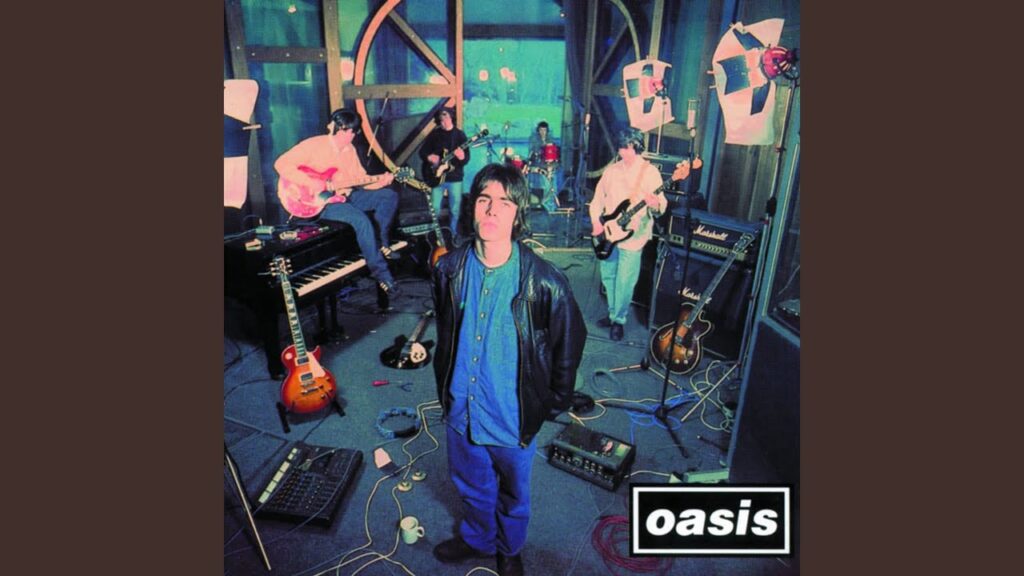This energetic live recording from Oasis’s discography delves into a profound internal battle, exploring themes of feeling trapped, confused, and controlled, while simultaneously holding onto a conditional hope for future belief.
At its core, the song is about the difficult journey towards finding one’s own “peace of mind” as the essential prerequisite for being able to truly “believe” – whether that belief is in oneself, in a relationship, or in a brighter future.

The narrator feels ensnared, both by their own internal turmoil and by an external influence that seems to drag them down. Yet, amidst this struggle, there’s a defiant spark, a conviction that achieving inner serenity will unlock a new capacity for faith and conviction.
The track paints a picture of someone acknowledging their own part in their predicament but also pushing back against a force that seems to diminish their autonomy. It’s a raw expression of wanting to break free from confusion and control, to find a clear sense of self, and from that place of inner strength, to finally embrace belief.
Lost at Sea: Navigating a World of Confusion and Blame
The verses immediately establish a powerful sense of confinement and personal responsibility. The singer describes feeling “locked up in chains for the rest of my life,” a stark image of being imprisoned, either literally or metaphorically by circumstances or their own mental state.
Crucially, they admit, “There’s no one else to blame but me,” indicating a heavy burden of self-reproach or an acceptance of their own role in their current situation. This self-blame adds a layer of depth to their suffering.
This feeling of being trapped is compounded by a sense of cyclical despair and disorientation. The lyrics note that “the start of the day is just the end of the night,” suggesting a monotonous, unending loop where there is no real progress or renewal. This leads to a feeling of being “lost at sea,” a classic metaphor for being without direction, vulnerable, and overwhelmed.
The singer also expresses moments of feeling utterly helpless, “down on my knees,” and caught in a state of indecision or internal conflict, like “a man in the middle.” This confusion extends to a lack of self-understanding – “I don’t know my own mind” – culminating in a desperate plea to be left alone, to be given space: “Won’t you let me be?”
A Dog on a Lead: Resisting a Controlling Influence
The chorus introduces a significant external factor contributing to the narrator’s struggle: another person whose presence is pervasive and seemingly controlling. The singer states, “I can find you living in my world,” which suggests that this individual occupies a dominant and inescapable space in their life and thoughts.
This presence isn’t necessarily comforting; in fact, it’s described with a striking and somewhat demeaning image: this person is “dragging me ’round just like a dog on a lead.”
This powerful metaphor conveys a profound lack of autonomy and a feeling of being controlled, manipulated, or led against one’s will. It speaks to a power imbalance within a relationship where the narrator feels diminished, their own agency suppressed.
The image of being dragged around like a leashed animal underscores a sense of frustration and a desire to break free from this subservient or controlled position. This external control appears to be a major obstacle to the narrator’s ability to find their own sense of self and peace.
The Promise of Peace: The Only Path to True Belief
Despite the feelings of being chained, lost, and controlled, the chorus also offers a glimmer of conditional hope, a path towards a more positive state of being.
The turning point hinges on a crucial achievement: “But when I find my own peace of mind.” This phrase is central to the song’s ultimate message. It signifies that the key to overcoming the current struggles lies within the narrator’s own ability to achieve inner calm, clarity, and self-acceptance.
Only upon reaching this state of “peace of mind” does the narrator declare, “I, I will believe.” The nature of this “belief” is left somewhat open, adding to the song’s intrigue. It could mean belief in themselves, belief in the possibility of a healthy relationship (perhaps even with the person currently causing distress, if things change), belief in a higher power, or simply belief in a better future.
Whatever its specific object, this belief is portrayed as a significant and desirable state that is currently out of reach due to internal turmoil and external pressures.
The song powerfully suggests that true conviction and faith can only be built on a foundation of personal serenity and self-possession. The repetition of “I will believe” at the end of the chorus reinforces the strength of this future aspiration.
Finding Faith in Freedom: The Enduring Quest
Ultimately, this song from Oasis is a powerful exploration of the human struggle for inner peace and the conditions necessary for true belief to flourish. It acknowledges the chains – whether self-imposed or external – that can hold a person back, the confusion that can cloud the mind, and the debilitating effect of feeling controlled or diminished by others. Yet, it doesn’t wallow in despair. Instead, it presents a clear, if challenging, path forward: the attainment of “peace of mind.”
The song’s enduring message lies in this connection between inner serenity and the capacity for faith. It suggests that we cannot truly believe, in ourselves or in anything greater, until we have first found a measure of calm and clarity within. The raw energy of the live performance only amplifies this quest, turning it into an anthem for anyone who has felt lost but still yearns for a future where they can stand firm in their own convictions, free from the chains of doubt and the leads of others.
It’s a testament to the ongoing human quest for self-discovery and the freedom that makes genuine belief possible.